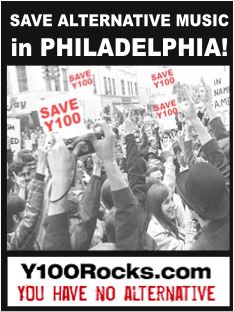
If the Y100 site had ever sold their Sonic Sessions acoustic performance compilation CDs directly, I would have gladly paid a premium to buy them. I wonder how many other niche stations are in this situation of untapped revenue potential for their websites either through cd sales or other forms of revenue like online advertising? And will it ultimately lead to their demise as well? The argument against investing more resources or money into a radio’s website is easy to grasp – why would a radio station assume that it’s audience would visit their website anyway? For advertisers on radio, this assumption is backed up by the fact that ad units on station websites are usually throw away "added value" components of a traditional radio media plan. I don’t believe I have ever worked on a media campaign where we paid for online ad units at a radio station site.
Yet the irony is that consistently for some of our grassroots local eAdvocacy campaigns, radio online banners have far outperformed paid placements. For example, in our recent NKDEP campaign, the banners we placed on a local Cincinnati radio station were the most successful across the entire campaign with click rates as high as 40%! Other campaigns, both public awareness, as well as consumer marketing have yielded similarly high performance. Given the apparent effectiveness of this medium, and the rise of podcasting programs which may drive radio listeners online to download these podcasts … what does this mean for traditional radio station websites? They may be behind the curve, but I believe they will rise quickly and start to invest more in their websites – and advertisers who see unexpected results will start to take notice. After all, it’s hard to ignore 40% click throughs …






WE RECENTLY REMOVED COMMENTING - LEARN WHY HERE >